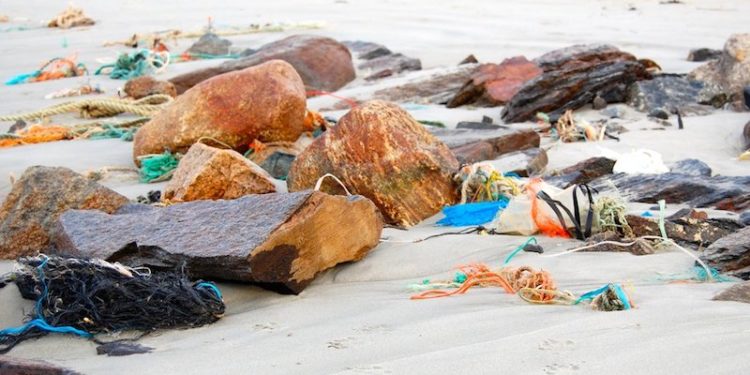Researchers from Norway and Russia have carried out surveys of the Barents Sea for many years, but a new report provides a summary of marine garbage identified 2010-2016, according to the Norwegian Institute of Marine Research (IMR).
The researchers surveyed catches from demersal trawls pelagic trawls and carried out visual observations of surface garbage. Marine garbage retrieved and observed was categorised into plastic, wood, metal, rubber, glass, paper, and textiles. The findings identify 72% of surface garbage observed as being plastic. 94% of pelagic tows and 86% of demersal tows contained plastic.
‘Most of the trash consisted of plastic. It shows the importance of both cleaning up and reducing emissions to the sea,’ said IMR’s Bjørn Einar Grøsvik.
‘Other materials such as metal, rubber, paper and textiles and glass were only sporadically observed.’
The observations made by the researchers are made on macro-plastics, items measuring 5mm and larger, which can be retrieved in pelagic or bottom trawls.
‘We still do not have an overview of the amount of micro-plastic found in the Barents Sea. We plan to include that next year. It also means that the real number may be higher because our estimate depends on what we can catch in trawls,’ he said.
Microplastics are particles that are between 1 micron (one millionths) and 5mm in size. If the plastic pieces are less than 1 micrometer, they are referred to as nanoplastics. As far as nanoplastics are concerned, researchers do not have methods to get identify items of this size.
The Assessment of Marine Litter in the Barents Sea report by Bjørn E. Grøsvik, Tatiana Prokhorova, Elena Eriksen, Pavel Krivosheya, Per A. Horneland and Dmitry Prozorkevich and carried out by the Norwegian Institute of Marine Research in Bergen and the Knipovich Polar Research Institute of Marine Fisheries and Oceanography, Murmansk is available here.









